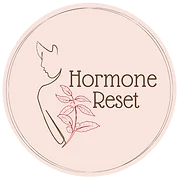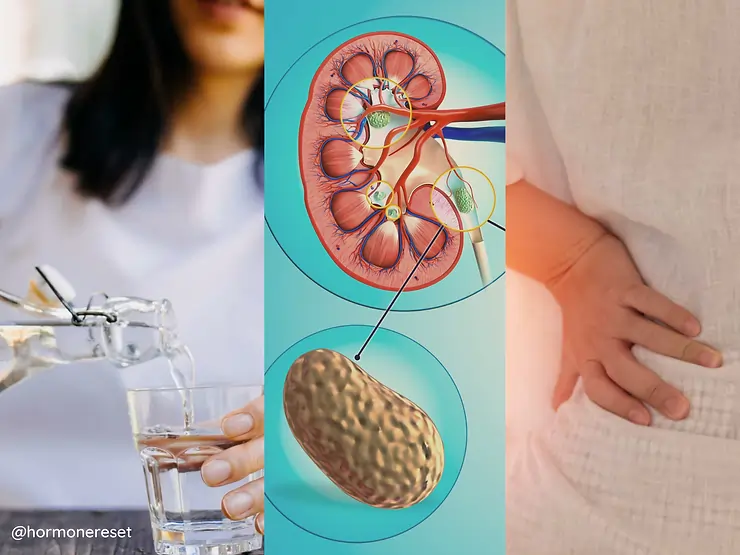Thyroid is a butterfly-shaped endocrine gland located in the throat. Thyroid related imbalances are perhaps the most common hormonal imbalances in our society. Conservative estimates put people suffering from thyroid issues at well over 200 million!!! And a vast majority of these are women. Over half of these are undiagnosed and many more may not be treated properly.
The thyroid hormones (T4 and T3) affect the functioning of every cell, tissue and organ in the body. Their level determines the rate at which the body produces and uses energy. In other words, the metabolic rate is largely decided by the thyroid levels. T4 is largely inactive and must be converted into T3 to be effectively used by the body. This conversion happens in other organs, primarily in the liver, kidneys and muscles.
Some of the key symptoms of hypothyroidism are:

- Slower metabolism leading to weight gain (also insulin resistance)
- Feeling cold (when others are not)
- Cholesterol imbalances
- Poor digestion including constipation
- Poor Brain function leading to poor memory, brain fog, etc
- Heart health and function
- Slower muscular response and low stamina
- Dry skin and hair fall
- Irregular periods
- Suboptimal immune function
- PMS, Low sex drive, Infertility
- Mood swing

Feedback Loop
Secretion of the thyroid hormones is controlled by a feedback loop. When the brain (hypothalamus) senses low levels it secretes thyroid-releasing hormone (TRH), which in turn, stimulates the pituitary gland to secrete thyroid-stimulating hormone (TSH). This then signals the thyroid to produce more T4 and T3 (about 80% is T4). As T4 and T3 levels increase, the secretion of TRH reduces leading
to lower TSH. This leads to the thyroid gland also reducing the production of the two hormones.

Conventional Approach
Generally, hypothyroidism is approached as a very simple problem. Most of the time only TSH levels are tested. Sometimes T4 is also included. After this, a certain dose of the T4 hormone is prescribed. The dosage is re-evaluated once or twice a year based on TSH and T4 levels. The real active hormone which is T3 is almost never taken into consideration.
We need to understand that thyroid function is way more complex than just TSH or T4 and hence this approach is woefully inadequate!
Thyroid function can be mediated via stress, nutritional deficiencies, toxicity, and autoimmunity. All of these need to be evaluated and addressed to reverse hypothyroidism.
Let us look at some important factors impacting thyroid function:
- Deficiencies can impair the body’s ability to produce T4 as well as convert T4 to T3. Iodine, selenium, and protein are needed for T4 production.
- T4 to T3 conversion also needs Iron, Selenium, Vitamin A, and Zinc.
- Toxins like chlorine, fluorine, bromine, lead, mercury, etc can affect both thyroid production and conversion.
- Stress reduces the conversion of T4 to T3. T4 is the inactive form while T3 is the active one.
- In auto-immunity, the body’s immune system itself can damage the thyroid gland thereby impacting the body’s ability to produce T4.
- Between 80-90% of the hormone produced by the Thyroid gland is T4. It is an inactive form. To be useful it needs to be converted into T3. This conversion happens in many different parts of the body and can be affected by a variety of factors. The liver and kidney convert t4 to t3 (or rt3) for circulation. The deficiency of zinc, iron, selenium, and vitamin A can affect the conversion. Brain, heart, and skeletal muscles do the intracellular conversion (and this does not get captured in lab tests).
- Also, T3 needs to enter the cells to be effective. This is also impacted by a variety of factors including stress.
- Another form of T3 is known as Reverse T3. rT3 blocks the action of T3. Stress can increase the conversion of t4 to rt3 – thereby effectively reducing T3 availability. This is a double whammy – not only do T3 levels reduce, but rT3 also occupies the T3 receptors thereby further reducing the effect of T3.
- Inflammation can reduce T3 intracellularly while serum T3 remains the same. In fact, TSH can even reduce hence we never get to understand why we feel all the symptoms of hypothyroidism.
Tests we should actually do to decode the root causes of Hypothyroidism

If we really want to understand what is happening with our thyroid we need to test for TSH, Total T4, Total T3, Free T3, Reverse T3 and the two main antibodies which are Anti-TPO and Anti-TG. In addition to these thyroid tests, it is also a good idea to test for nutritional deficiencies like vitamins, iron, iodine, selenium, zinc, and toxins like lead mercury, flourine, etc. Only if we run all these tests we can spot where the dysfunction lies.
In this blog on hypothyroidism, we focussed on the main factors that cause and aggravate hypothyroidism In the next blog on hypothyroidism, we will tell you about the strategies to reverse hypothyroidism.
Need help?
- Reach out to us on whatsapp at +91-9620317773
- Join our WhatsApp group to know more about Functional Medicine approach for balancing hormones and stay updated about our upcoming webinars and programs. https://chat.whatsapp.com/KeFOA2DsA296Ht84xYxLfh
- Know more about our Unique program for Hormone Reset : https://hormonereset.in/12-weeks-hormone-reset
References:
- Only the combined treatment with thyroxine and triiodothyronine ensures euthyroidism. H F Escobar-Morreale , F E del Rey, M J Obregón, G M de Escobar –https://pubmed.ncbi.nlm.nih.gov/8641203/
- Effect of treatment of overt hypothyroidism on insulin resistance. Aml Mohamed Nada – https://www.ncbi.nlm.nih.gov/pmc/articles/PMC3746089/
- Endocrine function in mercury exposed chloralkali workers. L Barregård, G Lindstedt, A Schütz, and G Sällsten – https://www.ncbi.nlm.nih.gov/pmc/articles/PMC1128033/
Share


